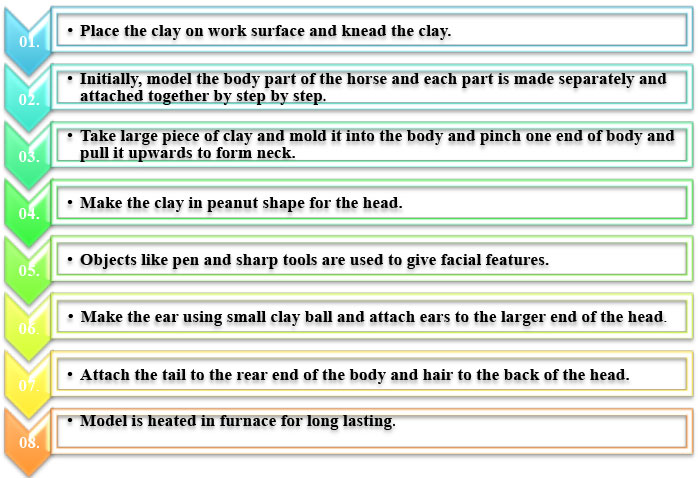Design Resource
Terracotta Modeling - Ahmednagar, Maharashtra
Clay Art
by
Prof. Bibhudutta Baraland Srikanth Bellamkonda
Here we are elucidating on the making of a terracotta horse. Generally, each part of this horse is made separately and assembled at the end. Hence to start with, the selected type of clay is placed on the workspace and kneaded well gently. Then it is spread evenly and cut into half in a rectangular shape. One portion of it is molded to form the horse's body edge. Another piece makes its neck. This portion is pinched at one end and pulled upwards to form the body part. Next, the artisan proceeds to the head forming, where three equal-sized clay pieces are turned into a peanut shape. It is then stretched appropriately to create the horse's nose and mouth. Moving to the facial features, the artisan crafts two triangle-shaped ears out of equal-sized clay portions. Using a pen, the eye of the horse is made by pressing. Clay rolled into long cylinder shapes makes the legs and is attached to the main body design.
Pre-prepared terracotta horsehair and tail are attached towards the end of the process. It is taken care that the hair covers the back of its head, neck, and between its ears. Pointed objects like pens or other tools are used for engraving details, and enough water is applied before the clay sets, to avoid breakage. Once the intended structure is ready, it is left for drying, followed by furnace heating to harden them. This step gives it immense durability. After hardening, these separately molded parts are assembled step by step from tail to head. At times, after seamed by mud, the craftsman does a last detailing and carvings to provide it a finishing touch.
Flow Chart

























